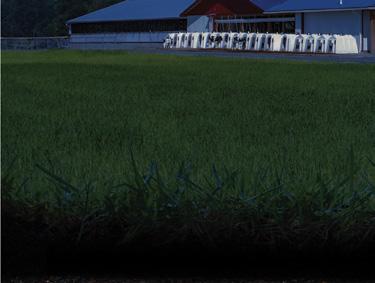MEET THE





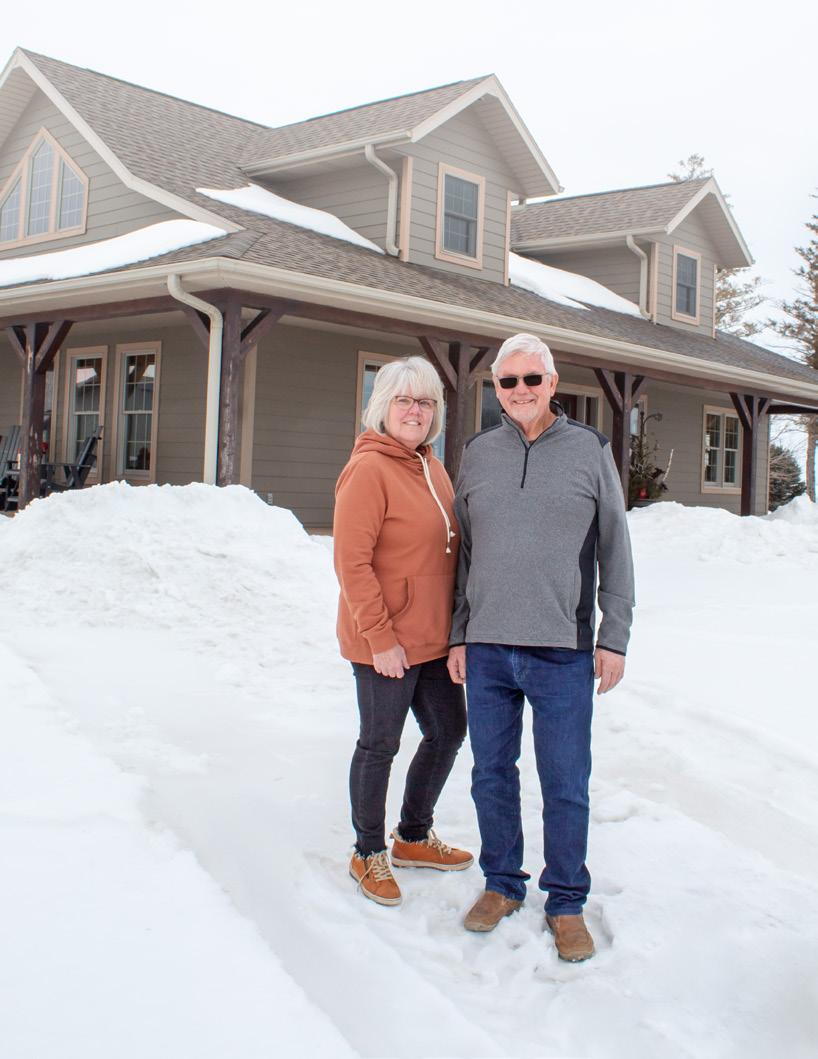



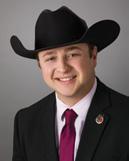



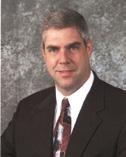
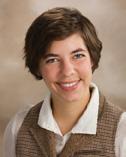

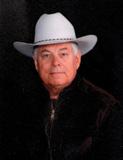

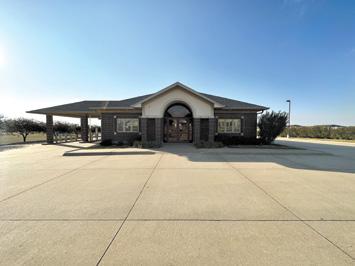

The Farming Families is distributed free exclusively to the farmers, ranchers and producers in rural Sioux, Plymouth and Lyon Counties. All rights reserved. Content in this magazine should not be copied in any way without the written permission of the publisher. The Farming Families assumes no responsibility for unsolicited manuscripts or photographs. Content in articles, editorial

are not necessarily endorsed by The



There were more than a few years that Vern Van Beek and his hired men doubled as part-time day care providers. At the same time, they were teaching the kids how to do livestock chores and field work.
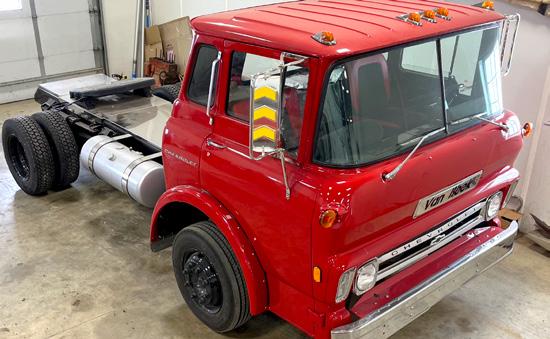

Vern and his wife, Ellen, have five daughters – Heidi, Sara, Rachel, Jodi and Lisa. The middle three were born within 3½ years. He joked about the often tractor-based daycare servcies, “The kids’ mother needed one out of the house. There were too many under her feet.” Ellen said, “I don’t know if it was quite that bad, but they did spend a lot of time outside.”
Vern and Ellen farm south of Inwood, just across the line in Sioux County. They grow corn and alfalfa, helping to supply feed to local dairies and their son-in-law’s cattle feeding operation. Vern had one of the area’s first custom cattle lots starting in 1979. He still owns some cattle, but he’s no longer hands-on. Without daughters at home to help scoop feedbunks and spread hay, he finally figured it was time to let someone else have that fun.
“Saturday, Sunday … you're on the job. You just never walk away from responsibility when you have livestock. Cold weather, warm weather, hot weather – you're on duty,” Vern said. But he’s always enjoyed being his own boss. “I never had a paycheck in my life. I never had an actual paycheck or
employer. My dad kind of started me right out of high school. It all worked out well.”
Their daughters were expected to help when needed. They also worked at restaurants and detasseled corn and worked at a dairy. “That’s just how it was. They helped bale hay back in the day and helped put hay in the barn. The girls scooped a lot of feed bunks in their day. They whined about it so bad when they were kids. Now they kind of brag about it,” he said. Ellen added, “They talk about it a lot now, how valuable that experience was. Because the experience of living on the farm and doing things on the farm has helped them to do the jobs they have today. They were raised the same way, but still they’re all different.”
Their oldest daughter, Heidi, lives in Sacramento, California. She’s traveled all through Asia and lived in Korea. Vern said, “She’s had that real adventurous spirit since she was in high school. She’s been around the world.” She works as a curricular analyst at the University of California-Davis School of Medicine. Her daughter, Dena, is a kindergartner.
Sara lives in Sioux Falls and is an independent interior designer. She also has a soil sampling business, VB Consultants. She has two daughters, Allyra and Saylor.

Sara and Rachel still do field work, including most of the planting. Ellen said Sara and Rachel are especially good at helping Vern with the technology side of today’s equipment. Vern tells them how he wants things done: “I put the end rows
While your propane supplier is locally owned, they are also backed by a strong national system. With nearly 80 years of propane experience, as well as the nation’s premier propane supply network, Cenex® propane products are here everyday, helping your local supplier deliver for you.
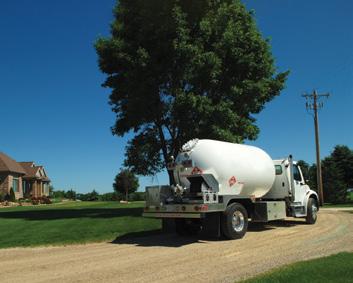
in and then go home,” he said. Ellen said, “When Rachel comes over and he wants her to disk, she just hooks it up and does whatever he needs done. She’s very handy and she's been



Rachel was the youngest to start operating machinery. According to Vern, “Rachel can drive anything I own. She was 10 when she started hauling manure.” Rachel is a firefighter and a captain for the Sioux Falls Fire Department; plus is in the Air Force Reserves. When she started at the fire department,
Daughter number four, Jodi, lives in Sioux Falls and works as a registrar at a middle school. She and her husband, AJ Nelson, own and operate Roof Max of Sioux Falls, a roof rejuvenation business. They also keep busy with their children, Van and Eve. Lisa is their youngest daughter. She and her husband, Darin Pollema, live on Vern and Ellen’s former homeplace, where they farm and feed cattle. Lisa works part-time for her fatherin-law at Hull Feed & Produce. Ellen said, “When they moved here, it was kind of comical because he started working for her
Darin and Lisa purchased Vern’s former feedlot about two years ago after leasing it for several years. “I ask him from time to time if he needs any help, but he seems to get along pretty well. Darin is one of those guys who can do absolutely everything. He can build, he can weld, he can fix anything. Makes a guy jealous. What takes me an hour, he does in
Darin and Lisa have a daughter, Hudsyn, and two sons,
Almost 15 years ago, when Vern and Ellen moved off the homeplace to their new home 1½ miles away on Highway 18, it was the biggest move of Vern’s life. He was born on the Lyon County side of 270th Street, and lived the rest of his life across the road where Lisa and Darin live now. Having always lived so close to his birthplace, “I feel gypped somehow,” he said

The couple makes up for Vern’s sheltered life on the county line by traveling a fair amount. “Just before Christmas, we took the whole gang of us to Florida, all 18 of us. That was fun,” he said. Last summer, Vern and Ellen went to Yellowstone and Montana; and recently went to the The Ark Encounter in Williamstown, Kentucky. They’re hoping for Alaska this summer.
Three years ago, the couple traveled to Israel with a group from First Christian Reformed Church in Rock Valley. “I'll never read the Bible the same again. We saw a lot of areas where Jesus walked,” said Vern. “The Garden of Gethsemane was probably the most touching part of it all to me. The Sea of Galilee was awesome. We saw a lot of neat things.”
Going to ballgames also keeps them busy, especially with


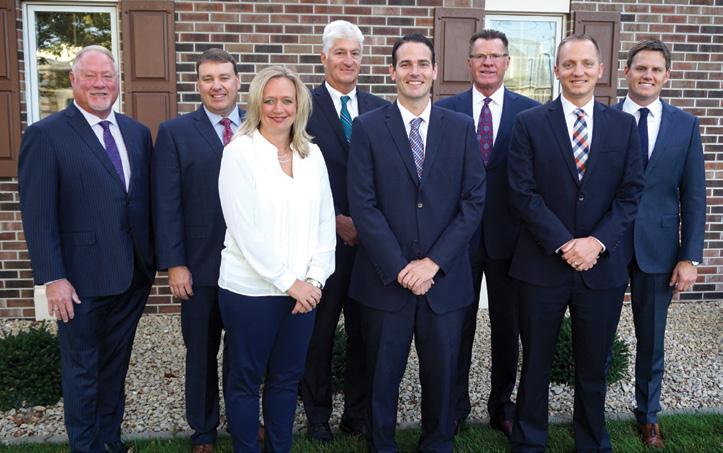
From birthcare to urgent care ... pediatrics to geriatrics ... screenings to surgeries … we offer the right care at the right place at the right time.


Orange City Family Medicine:712-737-2000

Hospers MedicalClinic:712-752-8800
MillCreek Family Practice:712-448-2000
Orange City Walk-In Clinic:712-707-6070
Hospital/Emergency Room:712-737-4984
Safe family medicine clinics in three communities, plus Walk-In Clinic and Emergency Medicine in Orange City.


Skilled family doctors, nurses, surgeons, therapists, urgent care and emergency medicine providers, and support staff.
Essential health and well-being services, screenings, and medical care for every stage of life ... every day.
Allyra is the oldest of their grandchildren with the youngest, Jettson, being one year old. “We did get three boys. But there are five girls, so it’s still ‘girls rule,’” Ellen said. What did Vern think when the first grandson was born? “I didn't know it was possible. People have often asked ‘How in the world could you raise five girls?’ I never knew any better because I never had a son to raise. You get what you get and we love every one of them,” he said.
In the fall, Vern, Ellen and oftentimes Rachel stay busy trucking silage and earlage for area farmers. “We've done that for years. We each had our own trucks,” Ellen said.
Vern said, “She challenged me one day by saying, ‘You buy me a truck with an automatic and I’ll drive it.’ So she got a truck with an automatic.” She said, “Then he still didn't think I would do it.” But Vern thinks he has a good crew. “We get compliments about our girl drivers, that they’re better than men.”
What do the five daughters have to say about their parents and growing up on the farm? “I'm glad the kids aren't here to
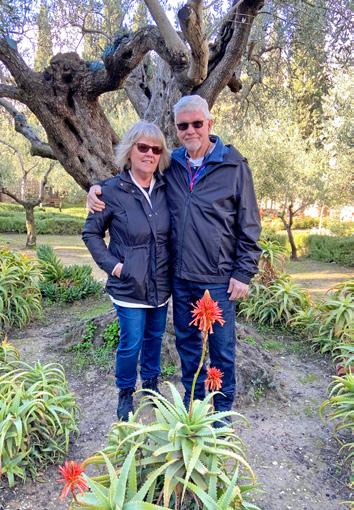

























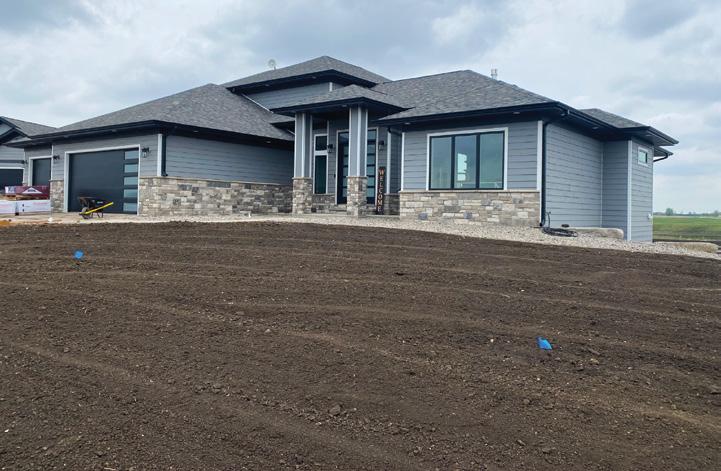




talk to you because they’d bring up more stories than we’d want to hear,” Vern said. Ellen agreed, “We’d probably have the same stories, but with a little different twist. They’re pretty lively.” He added, “If one doesn’t start talking, the other one will. They’re just so witty. They’re all the same that way.”






Vern concluded, “We’ve got so much to be thankful for all these years. We never were in want, we were able to provide. We were always together.”
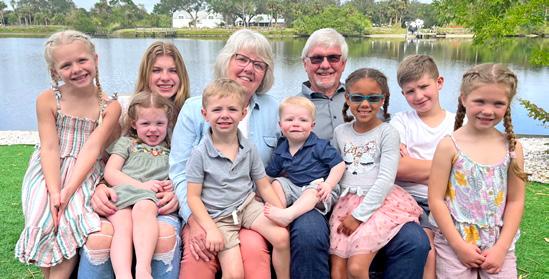

We are aggressively looking for new wean to finish barns to fit into our operation. Give us a call about your new construction plans for 2023.


East 712-753-4800 2403 US Highway 18 Inwood IA 51240

Valley Farms is a family farm that has been raising swine in northwest Iowa for over 50 years. Serving farmers in southeast SD and northwest IA SEMI and AG TIRES (new and used) MOBILE TIRE REPAIR AND SERVICE www.oak-street-station.com


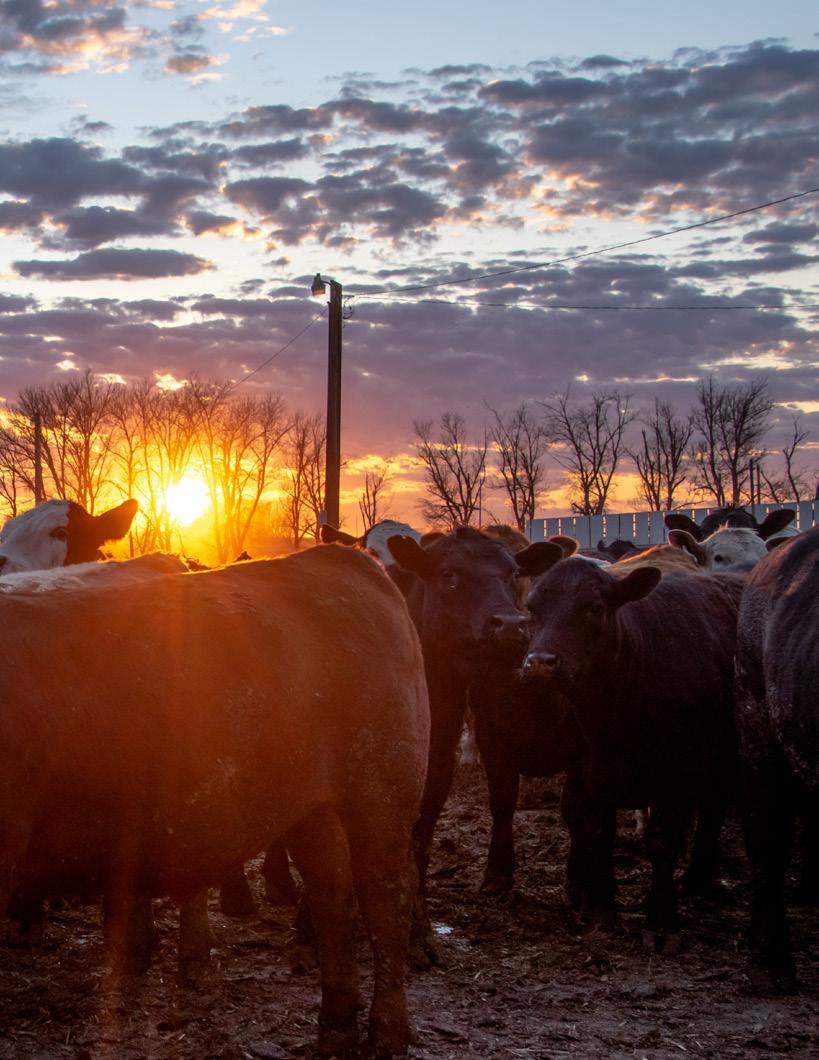 BEEF ON THE HOOF.
PHOTO BY BRETT DAVELAAR.
BEEF ON THE HOOF.
PHOTO BY BRETT DAVELAAR.
Derek Knobloch is an ag/business banking officer at Peoples Bank in Lester. He grew up on the family farm north of Lester, the oldest of five children. He’s a 1986 graduate of West Lyon Community High School. He attended Iowa Lakes Community College in Emmetsburg for two years before transferring to South Dakota State University in Brookings for a degree in ag business.
Being the oldest, I was asked to drive tractor at a very young age because my dad needed help with field work, an answer to a young boy’s dream getting to drive the tractor by himself. Another memorable moment was when dad remodeled our farrowing house and we went from a pitchfork cleaning out farrowing crates to a modern farrowing house – this was an inspiration to take a renewed interest in livestock farming. Taking a vacation trip to Washington, D.C., as a family was also a memorable moment, getting to visit the U.S. capital and all the sites you learned about in school.

My Grandpa Tanner taught me a work ethic that won’t ever leave and now I see it in my boys as they mature. My dad Meff taught me to be a good example and have patience with others. He was a man of few words but his walk and pattern of faith is ingrained into my mind forever. Dad was known as a peacemaker during most of his life. Now I see this very need in my life today (not sure I will be as successful).
My wife, Connie, is a paraeducator at West Lyon School. Talin, 20, will be graduating in May from Northwest Iowa Community College with a degree in industrial and commercial wiring. Tayton, 16, is a sophomore at West Lyon High School.
Upon completing college, I was employed with Lester Feed & Grain of Lester for 17 years as an assistant manager. In 2007, I had the opportunity to get into ag lending with U.S. Bank of Rock Rapids and worked there for 13 years before transitioning to Peoples Bank in 2020.

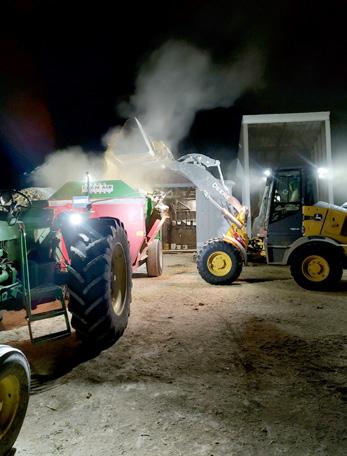
When I was working at the elevator in Lester, I was approached by an older relative asking if I was interested in a farming career. He had the intention of helping someone get started in farming and I was honored to have been asked and knew I couldn’t pass up the opportunity. With a crop and livestock farming operation, the busiest seasons were in the
spring and fall, making it hard to juggle my time with work since the elevator was always busy during those seasons, too. When a local banking position came available, it felt like a more compatible fit with the farm and I could continue the opportunity of serving people. Since most bankers are noted as spending time on the golf course, I told my boss during the banking interview that I don’t golf and would rather spend that time at home when needed to haul manure and load cattle. He laughed and said “go for it.”
Today, working full-time and with the help of my boys, we operate a cattle feedlot and custom feed some hogs in addition to the crop acres. This arrangement forces us to feed cattle early in the mornings and do fieldwork at night with the help of good LED lighting on the equipment. Wearing two hats helps me to stay in tune with how my customers are feeling when things go well or when the markets go against us and the crops weren’t as good as we had hoped. I have been blessed with the opportunity of being part of the Peoples Bank team, the flexibility they offer to their employees, and the values they promote through local ownership and decision making are unmatched.


A successful life to me is to put your faith in God as a priority before the work and all the other trials of life we face each day. I saw this lived out by my dad and it
became real as I watched him pass away peacefully 6 months ago.
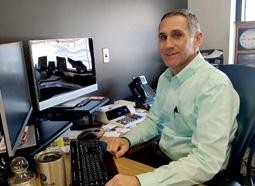
I stay busy serving on several boards. Thankfully my boys can cover things at home when meetings require me to be away from home. I am currently on the West Lyon School board, the Avera MPCH Hospital board in Rock Rapids, and ISU Ag Extension board. I’m also involved with the Lester Retirement Apartments and am involved with our church in Lester. Having a pulse on what is going on at school with my son and wife there gives me motivation to help serve on the school board. Being part of the 4-H and Extension when I was growing up, I know how it benefited me and I’d like to see it continue and prosper. The hospital is a new facility in Lyon County and we are fortunate to have this service so close to home. This also is a huge investment for the county and it needs our help to be maintained. To me, serving on boards is helping to steer organizations towards a sustainable future and giving back to our communities.

When we can find the time to break away, we like to camp and go fishing. The older we get, my wife and I just enjoy traveling to visit friends.
AMMONIA - the release of nitrogen equal to about 40 units per acre from building losses and field application.





HYDROGEN SULFIDE - one-third the loss of sulfur from manure.
METHANE - the loss of carbon in high PH and anaerobic conditions.
ONE A.C. PIT PUCK will control the gasses in 2,000 gallons of liquid manure for $3.50


It is the gasses that destroy the steel and concrete, and cause explosions in your buildings!! Gasses also cause coughing in hogs and workers!
QUESTIONS? CALL: Verlyn Sneller: 712-441-6359 | Dennis Von Arb: 712-540-2439
DISTRIBUTORS:



The Korean War ended 70 years ago in 1953. This is the story of Korean War Veteran Milton Lee Keizer, who was born on July 3, 1931, at a farm home in Settler’s Township, Sioux County, Iowa, across the river from Fairview, S.D. His parents, Gerben and Amy Keizer, later moved the family to Hawarden, where Milton grew up. Gerben farmed until December 1935 when he became the owner/operator of Northwest Iowa Feed Company in Hawarden; and later owned Hawarden Feed Mill. Milton’s brother, 2nd Lt. Leroy W. Keizer, USAAF, 1094th Signal Corps, was killed in action during World War II on Leyte Island on December 6, 1944.

After graduating from Hawarden High School, Milton volunteered for the United States Marine Corps and subsequently served in the Korean War. He was on the front lines of the Battle of Ka-San. Fortunately, he later became a trained journalist and wrote the compelling story of his life during wartime. His work ethic, tenaciousness and love of country comes through clearly. Milton died on February 2, 2019, at his home in Washington State.
The story has been edited for length. Some sections, denoted by the italics, are presented in summary fashion. The rest of the text is the author, Milton Keizer, speaking directly to you as he wrote it. The story in its entirety is preserved at koreanwar-educator.org/memoirs/keizer_milton/index.htm *
I attended Hawarden Grade School and graduated from Hawarden High School in 1949. During my school years, I de-tasseled corn, picked cockleburs, shocked oats, worked in father’s feed mill, and clerked in J.C. Penney’s. I also clerked in the Coast-to-Coast Hardware store, and worked for Mike Dykstra, who was a house and barn painter. For two summers, I worked for railroads, re-laying and repairing track.
I enlisted in the Marine Corps because I wanted to choose my branch of service and length of enlistment. I wanted to take control of my future. I knew and admired hometown Marines of World

War II. I signed up for one year of active service and six years of inactive reserve duty.
The training camp area at San Diego, California, was flat, sandy, hot during the day and cool at night. Boot camp was 12 weeks of learning basic rifleman skills, watching films on health and military equipment, personal fitness, hygiene, map-reading, and drill, drill, drill.
During those 12 weeks of training, there were times when I was sorry I had joined the Marine Corps. It was my first time of extended absence away from my family and high school sweetheart. Also, there were days I despaired whether I could measure up to Marine standards. We drilled in the heat of July, August, and September. At times, I thought the "Marine way" was too rigid, but later knew there was a reason that trained, automatic response was necessary. (At the completion of boot camp,) I had obeyed all orders, done all tasks assigned to me, fired "Expert" with the rifle, learned the commands and Corps history, and felt I did belong. I was stronger, more alert, confident, and tolerant of strange people newly met.
(After being released from duty), in July and August of 1950, I worked for a house painter. Then I began courses at State University of Iowa in September 1950, just like I had planned. When the Korean War broke out, I figured that I wouldn't be in (it). (But) I got my first discharge on June 30, 1950, only a few days AFTER the Korean War began. Four months later, I was activated.


Our (training) instructors were veterans of World War II and Korea action. When they told us about the hostile geography and the fighting tenacity of the North Koreans, I began to realize that this was a serious war, and not a "Police Action."
We had trained against simulated enemy forces in simulated Korea situations. This, plus the Marine training I had already undergone, would help me automatically respond to similar occurrences and, even when dead tired, cold and hungry, what I learned from the Marines "kicked in" to keep me going once I got to Korea where so many difficult challenges awaited me.
Nearly 3,500 Marines were on the ship that carried Milton and his comrades to Korea in February 1951. The trip took 16 days, including stops in Hawaii and Japan. During the stop in Hawaii, the Marines took advantage of liberty by swimming, having Turkish steam baths and eating lobster and steak. “We took the opportunity to ‘do it all’ in case we didn't survive Korea,” Milton said.
I was in the last dozen or so Marines that arrived that day to be assigned to a company and battalion. I was sent to the 1st Marines, 3rd Battalion, George Company. On the day we moved up to the front, I saw two prisoners being escorted under guard to the rear. When we went through a napalmed area on the way to join my outfit on March 5 or 6, I saw a
couple burned corpses of the enemy. I felt no qualms about the dead enemy. They were faceless, nameless bundles of burned clothing and bone.
We were near Chunchon, below the Iron Triangle, and southeast of the Hwachon River. The Marines of G-3-1 were dug in on a hilltop, and would stay there several days in reserve, resting, repairing gear, and filling up squads with replacements. I made friends, but you didn't want close buddies because they could be blown away any day, and that would hurt. The closest "buddies" killed in Korea were Boot Camp buddies not serving with my line outfit. I barely knew the G-3-1 Marines killed just seven weeks after I joined the outfit.


TSgt Harold E. "Speedy" Wilson was the 3rd Platoon Sergeant. At all times while I was with George Company in March and April 1951, we looked to T/Sgt Wilson for experienced leadership and he, being an extremely good career Marine, commanded us well by example and quiet orders. He was 100% Marine, an excellent NCO, brave, cared for his men's welfare and safety, was well-trained, firm but friendly. I believe he saved my life on Hill 902.
When I first arrived in Korea, the nights in March of 1951 were freezing cold. I recall only taking about three helmet baths that month. I took several during the
soggy, humid days of April. I shaved once a week, and changed clothes about 5-6 times in seven weeks. There was sizzling heat in late July and August.
Meals consisted of cold C-rations, or hot C-rations those times we could have a fire. I missed stateside ice cream, watermelon, pork chops and hamburgers while I was in Korea. I never ate the native food. The best meal I ever ate during the war was a turkey dinner at an Air Force mess tent at Thanksgiving. The ambulance driver stopped to make a pick-up, and we stayed to eat. I also got some care packages from home. My parents, girlfriend, and sister sent cookies, fudge, cold meat rolls packed in popcorn, and gum.
Lacking radios, the enemy gave commands by using bugles and whistles at night, but were silent during the day. The exception to this was one lone enemy soldier who in March, when we were temporarily stalled, greeted the morning with a howling cry. Of course, he was labeled "Tarzan."
Many of our enemy had U.S. weapons taken from Army and Korean outfits they had defeated. Their concussion grenades, however, were not as good as our fragmentation grenades. You could survive close explosions, as many of our men found out. The only time I saw the enemy up close was dead. They were clothed in tennis shoes,
baggy uniforms, and quilted jackets. Because there were no atheists in our foxholes, many of us attended Sunday services. We joked a lot, had some volleyball games, played horseshoes, and, in July and August, we occasionally went swimming. I had smoked before entering the service, so in Korea I smoked C-ration cigarettes. I drank my beer ration and played some penny-ante poker.
When we were fighting on the lines, we did not have the options to formulate opinions on decisions of military and political superiors. The line Marine's world was rather constricted. You knew your job, knew the few people on either side of you, your immediate superior, his superior, and your unit commander. You had a place to be and orders to follow. We did have strong feelings, but they were transitory, being mostly about daily miseries of cold, hunger, and hardship. Only when you were in reserve was there time to get introspective about why this and why that. At other times, we had to be 100% alert for daily dangers of ambush, evidence of enemy activity, odd behavior of civilians, etc. Overlooking such things could kill you and your unit.
Taken forward several miles across the Hwachon River, the trucks went as high on the foot of the mountains as the road allowed. We were hurried along a foot trail, and when
the trail ran out, we climbed up and to the northeast all afternoon, with only brief stops to rest. It became apparent that we were in some kind of race, as our officers and noncoms urged us on. At 2000 that evening, we topped the hill and were swiftly assigned positions. About 20 to 25 minutes after G-3-1 reached the top of Hill 902, the enemy arrived from the other side. Shouts and rifle fire, grenades bursting, and the booming of a .45 caliber pistol punctured the growing darkness. Our machine gunner, Danny Daniels, began firing, cutting down the advancing enemy and causing them to disperse to cover. "Speedy" Wilson came to my foxhole, 40 feet left of and on a side hill beside our machinegun, and ordered me back to the ledge, then accompanied me to ensure that I made it. By that time, the machinegun had also been ordered back and Danny and assistant gunner DeVries began firing from the ledge. When PFC C.W. Johnson
came over the ledge from the right rear of our gun, an enemy bullet pierced his kneecap.
Howe and Item were commanded to hold fire, so as to conceal the location of their supporting lines, but helped us greatly with supplies of grenades, our most effective defense. I moved my two ammo cans to within reach of our assistant gunner, then was told by Gunny Wilson to see that C.W. Johnson made it safely over the hilltop to where our aid station had been set up, then return. When I did so, coming back to the right rear of the gun, I was injured in the right hip and leg by a hand grenade. Wilson was immediately there, and told me to take Jacobson back 12 feet or so, to the shelter of some stacked mortars and cover him, since "Jake" was unable to use his right arm to defend himself.
When grenades and mortars were thickest, we heard the sudden

"thump" of one hitting a Marine and exploding. It was DeVries, who was struck in the lower back and killed. To this day I do not know whether I imagined, or really heard his low moan of "Mother" before he died. PFC Joe Faulk was creased on the top of the head by a bullet and temporarily paralyzed on one side, which lasted for weeks. PFC Marvin Ryan was drilled through the shoulder by a bullet. (Ryan was big – a 200-pounder.) TSgt Harold E. Wilson was hit several times by bullets and repeatedly struck by shrapnel. His right arm was hurt and his face bleeding. He continued encouraging his Marines, finding them grenades, ammo clips and holding morale high. He was awarded the Medal of Honor for his actions that night.
Corpsmen weren't bulletproof either. A Corpsman from one of the other platoons was shot through a shoulder, and continued treating Marines while he in turn
was being aided by "Doc" Leeson. One enemy crept almost into the first-aid station. Doc pounded on his head with an entrenching tool and thoroughly discouraged him, rolling him back downhill.
During the fighting, the enemy came close enough to the ledge that they could jump and almost reach the tripod of our machinegun or a few rifle barrels too close to the ledge edge. Hand grenades bounced off the slope below the ledge helped dissuade these attempts. When they got clever and threw the grenades back, some Marines tied sleeping bag straps and shoelaces to the grenades, and tossed them outward, but the grenades never hit the ground. They exploded as they hung from the ledge and cleared the area immediately below us.
Fighting continued all night, with machinegun and rifle bullets, mortar shells, grenades and a few rockets attempting to snuff G-31. Didn't happen. We gave back better and more directed fire than we received. That protective ledge sheltered us ... and the bullets whizzing only feet above illustrated why Marines are taught to "keep your heads down."

The Navy corpsmen who were assigned to G-3-1 … were real jewels of care, patience, and understanding. We took these men into our hearts as brother Marines. They shared our risks, suffered under the same heat, cold, and enemy fire that we did, carried as much if not more gear, and literally plugged the holes in our bodies, in many instances saving our lives.
Milton marked his 20th birthday while he was in Yokosuka Naval Hospital in Japan.
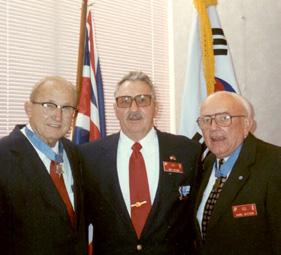

My parents received a telegram about my injuries. My father later told me how he had received the telegram. It was the second
telegram my parents had received from the "GOVT, WASHINGTON, DC." The first message had given them the terrible news of my nextolder brother's death in World War II on Leyte Island – the only one of many Keizer cousins who fought in World War II who was slain. HOW my telegram was delivered illustrates the warmth and caring of a small town. The CNW Station Master (and father of one of my classmates) who was also the telegrapher, and who had borne the first telegram, handcarried "War Dept. Message #2" four blocks to my father's business. He would not, however, give it to my father until he had repeated several times the facts that, "Milt has only been wounded, and is now safely in the hospital. ONLY wounded." Every time I think back to that act of kindness, I get tears in my eyes.
Milton returned to the front. Their only dangerous day was when the ROK were trying out a new firing range and a few of their bullets came ricocheting over a low hill and through the tops of some of our six-man tents. Ammo was drawn, as it was assumed they were under sniper attack, and his group skirmished up the hill. Words were exchanged between U.S. superiors and the ROK officers. The "firing range" was re-oriented, immediately! This was the end of the shooting war for Milt. He was transferred to First Marine Support on 13 August 1951. He was glad to be going to relative safety “to the rear with the gear."
Milton was glad to be heading for the United States. When he left his ship at San Diego, he said “the United States of America looked good, smelled good, and felt good.” He headed home to Iowa.
It was an unusually early spring, mid-afternoon, and I sat under a warm sun on the rear railing of the caboose as we rolled through the




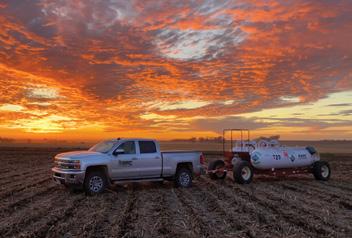


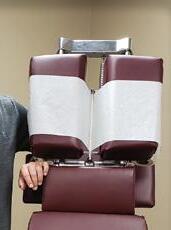

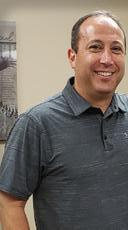


Missouri Valley, heading toward Sioux City. I sucked in the lush air, the green, growing smells of the field, and knew that I was truly "home." I'd told no one when I was coming, arrived in late afternoon at the train station and shouldered my sea bag to savor the walk home – about 1¼ miles through familiar small-town streets. My mother had barely begun preparing supper when I walked in and asked, "Do you feed hungry strangers here?" She did.
After his discharge, Milton resumed his studies at State University. After three years, his G.I. benefits were nearly exhausted. Even though he had only 19 days of school time left, he had to postpone his studies with a young wife about to give birth. To support his family, he went to work for Link-Belt Speeder Company in Cedar Rapids. Twelve years later, with four children in tow, he returned to Iowa City where he graduated in 1968 with a bachelor’s degree in journalism.
Serving with Marines from all over the USA taught me every man's contribution counted, however humble the task. It also showed me how close to death all men are: not only a bullet, but perhaps a blood
clot, or extreme cold, can kill you.
Milton worked as a journalist from 1969 to 1998, primarily covering topics related to the outdoors. He also authored five books, and cofounded two fishing magazines. Much of his work was location-specific to Washington State.
The hardest thing about being in Korea was lack of family interaction. We visited a lot as I was growing up. My father had 10 brothers and sisters, and my mother had two brothers and a sister, so we visited kinfolk frequently and had some great picnics and family meals. I missed that in Korea.
I remember Korea from my first impressions to my last ones. My strongest memories are of the cold, heat, mud, mountains, and of trees mostly having been shot to shreds.
My perception of a hero is someone who does his job exceedingly well, in the face of and despite danger and risk of death. Yes, I got a Purple Heart for the wounds I incurred on April 23-24 – but, hey – almost EVERYONE in G-3-1 had one or more Purple Hearts and other medals. Receiving it was no big deal. I was
recalled. I went. I fought. My unit was a team in which I did my share, and I survived a major battle (Hill 902) in the platoon of and because of a "Marine's Marine," T/Sgt Harold E. Wilson MOH. That will stay in my heart for as long as I live.
The Korean War was a mean, dirty, bitterly cold, stinking hot war that no one liked ... but it was also necessary.

The Marine Corps teaches duty, honor, respect, pride, and a commitment that stays with you. There is a discipline ingrained in Marines from "Basic" to Honorable Discharge that you can draw upon to overcome civilian "battles" too. You do not fail to salute our country's flag, never forget to snap straight at "Ten-hut!" or to square your shoulders when "The Marines Hymn" is played. You didn't buy it, weren't given it as a gift. You EARNED the title of Marine, and can wear it in pride and honor.
*SOURCE This story and similar stories have been collected and shared on the website “Korean War Educator” (koreanwar-educator.org/ home.htm). Site coordinator Lynnitta Brown, of Tuscaloosa, Illinois, has interviewed many Korean War veterans. This story is used with permission from Korean War Educator and from Milton Keizer’s son.







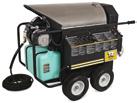






We are an advanced hearing practice that specializes in diagnosis, treatment, and prevention of hearing loss for all ages.


From www.inspiredbycharm.com
INGREDIENTS
• 1 cup unsalted butter softened
• 3/4 cup brown sugar
• 3/4 cup sugar
• 1 teaspoon baking soda
• 1 teaspoon cinnamon
• 1/3 teaspoon ground ginger
• 1/2 teaspoon salt
• 2 eggs
• 1 teaspoon orange zest
• 1 teaspoon vanilla
• 2 cups all-purpose flour
• 1 cup quick-cooking rolled oats

• 1 cup grated carrots about 3 medium carrots
• 1 cup pecans finely chopped
CREAM CHEESE FROSTING
• 1/2 cup unsalted butter softened
• 1 package (8 ounces) softened
• 1/2 teaspoon salt
• 1 teaspoon vanilla
• 4 cups confectioner's sugar
1. Begin by preheating your oven to 350 degrees F.
2. In the bowl of a stand mixer, combine butter, sugar, brown sugar, baking soda, cinnamon, ginger, and salt. Beat at medium speed until creamy, scraping the bowl when necessary. Then beat in the eggs, orange zest, and vanilla.
3. Next, mix in flour. Then, stir in the oats, carrots, and pecans until just combined.
4. Drop the dough by rounded tablespoons on to a greased or parchment-lined baking sheet. Bake 13-15 minutes or until the edges of the cookies are lightly browned. Cool for 2 minutes on the baking sheet; then transfer to a wire rack to finish cooling.
5. In the meantime, prepare the frosting. Begin by beating together butter, cream cheese, salt, and vanilla until smooth. Then, add the confectioner's sugar one cup at a time, beating in between, until smooth and creamy.
6. Once the cookies are cooled, frost with about 1-2 tablespoons of frosting.


